Last fall we began working on a parking garage that had significant structural issues due to years of deferred maintenance. We finished the project recently and below is a recap of the problems and how we remedied them.
QUESTION: What is the cause?
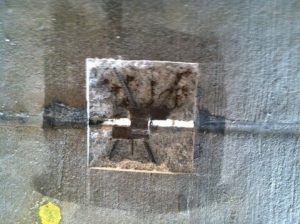 Years of water infiltration through the concrete decks caused great damage by corroding the steel connection plates of the existing precast concrete, double-T panels and the reinforcement bars which hold the connection plates to the double-T panels.
Years of water infiltration through the concrete decks caused great damage by corroding the steel connection plates of the existing precast concrete, double-T panels and the reinforcement bars which hold the connection plates to the double-T panels.
QUESTION: How could it have been prevented and what plans need to be put in place to ensure prevention in the future?
Understand the design of your structure and have an annual maintenance and inspection plan to protect the structure and catch problems as early as possible.
Many a conversation takes place regarding the necessity of parking garage maintenance. New parking garage maintenance supervisors have been quoted saying that: “it doesn’t need yearly maintenance, it is steel and concrete.” Although repairs are often anything but pleasing to the uneducated eye, they are definitely necessary on a prescribed schedule.
Seasoned veterans of parking garage maintenance, especially in the Northeast due to the impact of salt in the winter, will tell a very different story. Deferred maintenance to stay within budgets often means less than ideal maintenance: severe asset deterioration and exponential financial costs. The actual cost of the repair is magnified when owners have to factor in the loss of revenue due to the closed-off parking areas for extended periods of time.
Hascall & Hall recommends that parking garage customers form a partnership with an engineering firm and work with them to properly outline the appropriate repair process and critical areas of safety and concern. We routinely partner with both an engineering firm and our customer to help them keep structures like parking garages safe and open for business.
QUESTION: What was the ultimate diagnosis or impact from the deterioration or deferred maintenance of this particular project?
To restore the parking garage to a safe and functional structure required a five year, multi-phased and carefully orchestrated repair. Hascall & Hall came in to complete the last three phases of the repair which took approximately three years to accomplish. And all the while, the safety of all people and the structure was maintained.
QUESTION: What was the cure or the plan of action to repair the damage?
Although every parking garage repair is specific to the structure and the inherent damage, this particular project required the following:
- Each area of work was closed off for the duration of the repairs to protect both pedestrians and vehicles from any harm; the client experienced significant lost revenue.
- The perimeters of all the concrete surrounding the double-T connections were saw cut.
- All of the deteriorated concrete was carefully chipped away to expose every damaged double-T connection plate.
- Each damaged double-T connection plate had to be burned off.
- The remaining reinforcement bars required a light sandblasting to be properly prepared for an epoxy corrosion inhibitor.
- After the epoxy process was completed, new steel connection plates were welded in place to reinforce the bars.
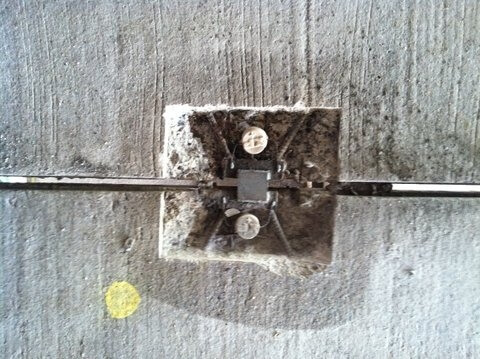
- Two new embedded galvanic anodes for corrosion prevention to the new plates were welded in place.
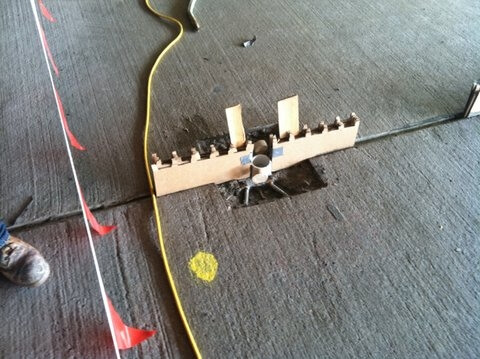
- We placed forms over the new plates and through the patch area to allow for new sealant.
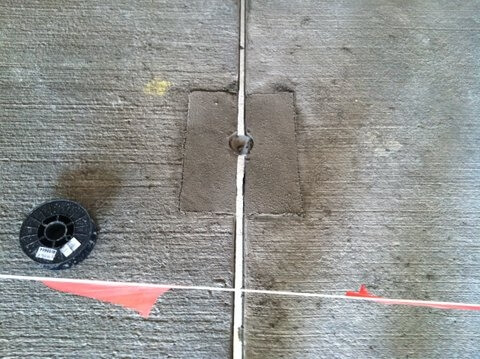
- The repairs required a rapid setting concrete repair material in the repair area.
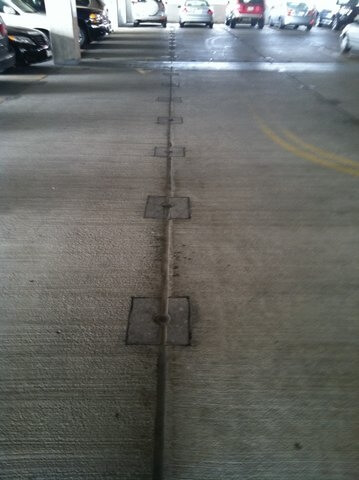
- The construction equipment and debris was cleared away to open up the parking areas for use (and the client began earning revenue).
QUESTION: What was approximate cost of repair both short and long term?
Hascall & Hall’s portion of the five-year “short-term” solution was approximately $750,000. The long term costs are to be determined by developing and following an ongoing plan and properly managed by personnel to avoid such extreme costs in the future.
According to the Federal Accounting Standards Advisory Board, Accounting Standard 40 includes deferred repairs in the deferred maintenance definition: “Deferred maintenance and repairs are maintenance and repair activities that were not performed when they should have been or were scheduled to be and which, therefore, are put off or delayed for a future period.”
Maintenance and repairs are activities keeping fixed assets in an acceptable condition. At Hascall & Hall, we strongly recommend that customers have such activities in place with proper supervision to ensure that proper repairs are made in a timely manner to minimize negative financial impact.
